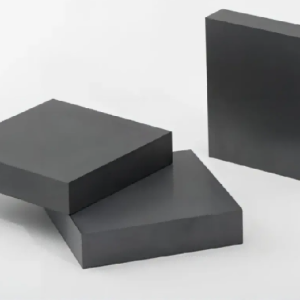Discover Premium Ceramic Products | Durability & Elegance United | Advanced Ceramics
1. Introduction
When it comes to handling molten metals, glass, or high-temperature chemical processes, not just any container will do. Enter the silicon carbide crucible—a workhorse of foundries, labs, and industrial furnaces. But as advanced ceramics evolve, alternatives like silicon nitride are gaining traction. So, how do they stack up? And what makes silicon carbide so enduringly popular across everything from metallurgy to kitchenware?

In this deep dive, we’ll compare silicon carbide crucibles with silicon nitride ceramics, unpack their strengths and weaknesses, and explore the broader ecosystem of silicon carbide products—from rbsic silicon carbide tile blocks to silicon carbide ceramic dinner plates.
2. Silicon Carbide Crucibles: The High-Heat Champion
Silicon carbide crucibles are prized for their exceptional thermal conductivity, resistance to thermal shock, and ability to withstand temperatures above 1,600°C. Made from sintered or reaction-bonded silicon carbide (often labeled as RBSC or RBSiC), these crucibles are ideal for melting non-ferrous metals like aluminum, copper, and zinc.
Key advantages include:
- Rapid heat transfer, reducing energy consumption
- Long service life due to chemical inertness
- Minimal contamination of molten materials
However, they can be brittle and may degrade in highly oxidizing atmospheres over time. Still, for most industrial melting applications, silicon carbide remains the gold standard.
3. Silicon Nitride: The Emerging Contender

Silicon nitride ceramics—produced by companies at a silicon nitride crucible factory—offer impressive mechanical strength and thermal shock resistance. Unlike silicon carbide, silicon nitride maintains toughness even at elevated temperatures, making it suitable for structural components like custom silicon nitride heat shields or silicon nitride rings in aerospace and semiconductor manufacturing.
While silicon nitride crucibles exist, they’re less common due to higher costs and more complex fabrication. That said, in applications demanding extreme fracture resistance—like turbine blades or high-precision bearings—silicon nitride shines.
The high purity silicon nitride powder market is growing, driven by demand in electronics and advanced engineering. Yet for bulk melting tasks, silicon carbide still wins on cost-effectiveness and thermal performance.
4. Boron Carbide vs Silicon Carbide: A Quick Comparison
Though not as widely used in crucibles, boron carbide is sometimes mentioned alongside silicon carbide due to its extreme hardness. However, boron carbide is more expensive, harder to sinter, and less thermally conductive. For crucible applications, silicon carbide offers a better balance of cost, manufacturability, and performance.
In short: boron carbide excels in armor and abrasion resistance; silicon carbide dominates in thermal management and containment.
5. Beyond Crucibles: The Versatile World of Silicon Carbide Ceramics

Silicon carbide’s utility extends far beyond melting pots. Its durability and heat resistance make it ideal for diverse forms:
- Silicon carbide ceramic tiles and rbsic silicon carbide tile blocks line kilns and furnaces
- Silicon carbide burner nozzles and silicon carbide brick withstand combustion environments
- Silicon carbide tubes—including silicon carbide thermocouple protection tubes and silicon carbide ceramic tubes for furnace use—handle corrosive gases and high temps
- Even consumer goods like silicon carbide ceramic baking dishes, silicon carbide ceramic dinner plates, and silicon carbide ceramic serving bowls leverage its non-reactive, oven-safe nature
Yes, you can find silicon carbide ceramic butter dishes with lids, silicon carbide ramekins, and even silicon carbide Christmas ceramic platters—proof that this industrial material has crossed into culinary design.
6. Practical Considerations: Choosing the Right Material
When selecting between silicon carbide and silicon nitride, consider:
- Operating temperature and atmosphere (oxidizing vs. inert)
- Required mechanical strength vs. thermal conductivity
- Budget and part complexity
For most foundry and lab crucible needs, silicon carbide is the go-to. For high-stress, high-precision components in extreme environments, silicon nitride may be worth the investment.
Meanwhile, everyday items like silicon carbide black ceramic plates or silicon carbide ceramic pasta bowls benefit from the material’s scratch resistance and aesthetic versatility—available in white, black, or even blue-white porcelain styles.
7. Conclusion
Silicon carbide crucibles remain unmatched for high-temperature containment, thanks to their thermal efficiency, chemical stability, and cost-effectiveness. While silicon nitride offers compelling mechanical advantages in niche applications, it hasn’t displaced silicon carbide in mainstream melting or heating processes.
From industrial silicon carbide ceramic piping to handcrafted silicon carbide ceramic plates for dinner, this material bridges the gap between rugged engineering and elegant design. Whether you’re casting metal or baking a casserole, silicon carbide delivers performance you can count on.
Our Website founded on October 17, 2012, is a high-tech enterprise committed to the research and development, production, processing, sales and technical services of ceramic relative materials such as Silicon. Our products includes but not limited to Boron Carbide Ceramic Products, Boron Nitride Ceramic Products, Silicon Carbide Ceramic Products, Silicon Nitride Ceramic Products, Zirconium Dioxide Ceramic Products, etc. If you are interested, please feel free to contact us.

